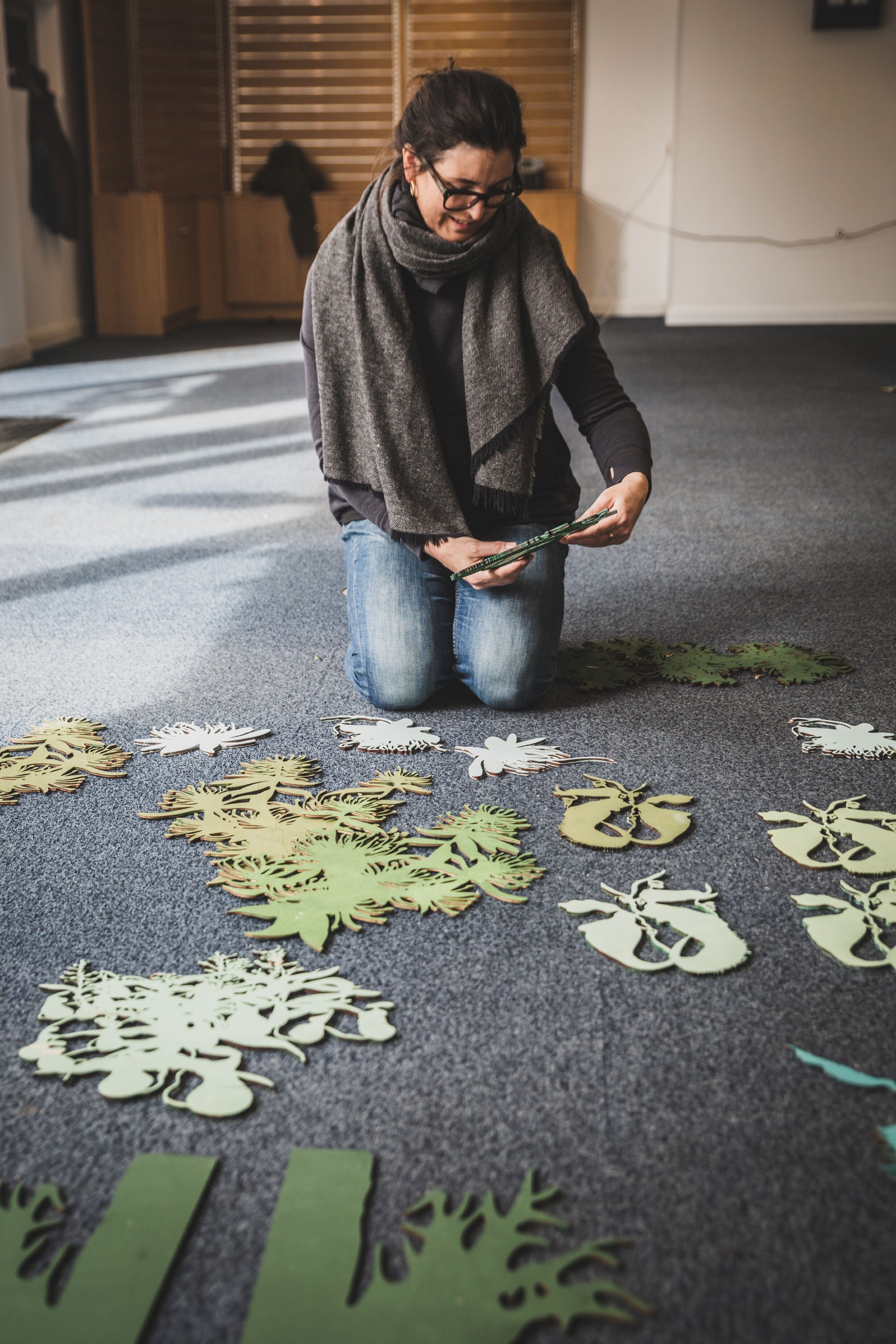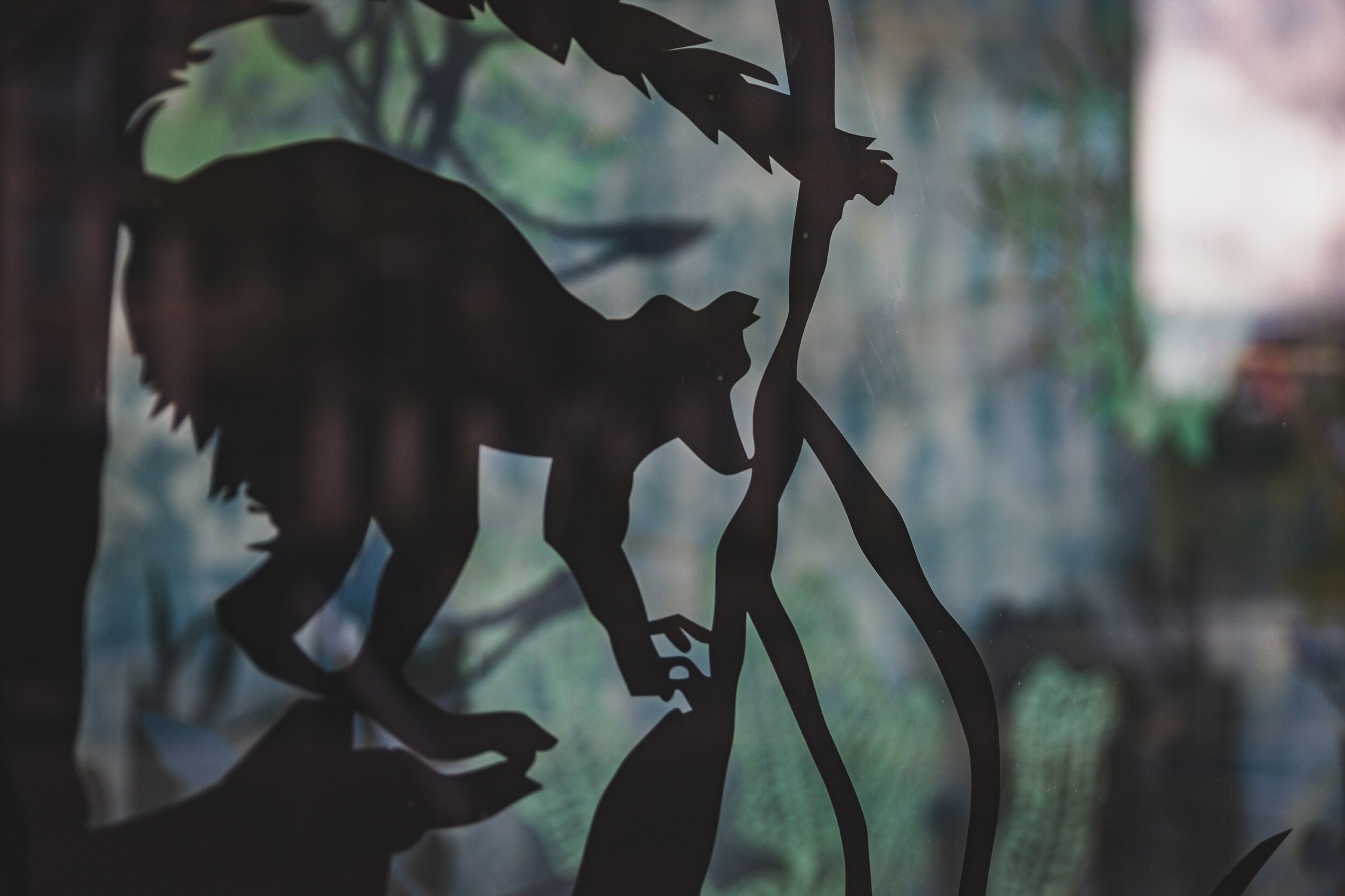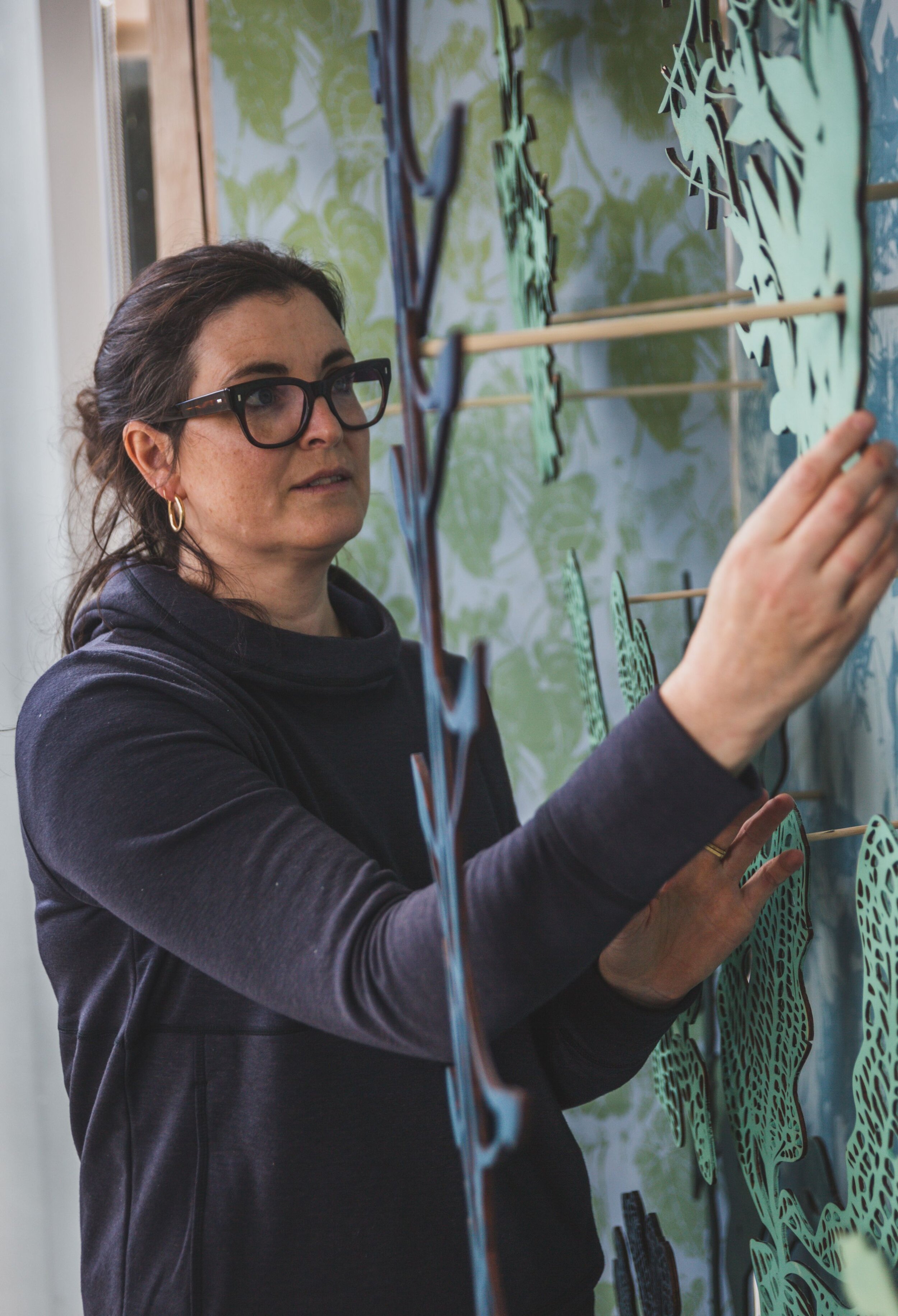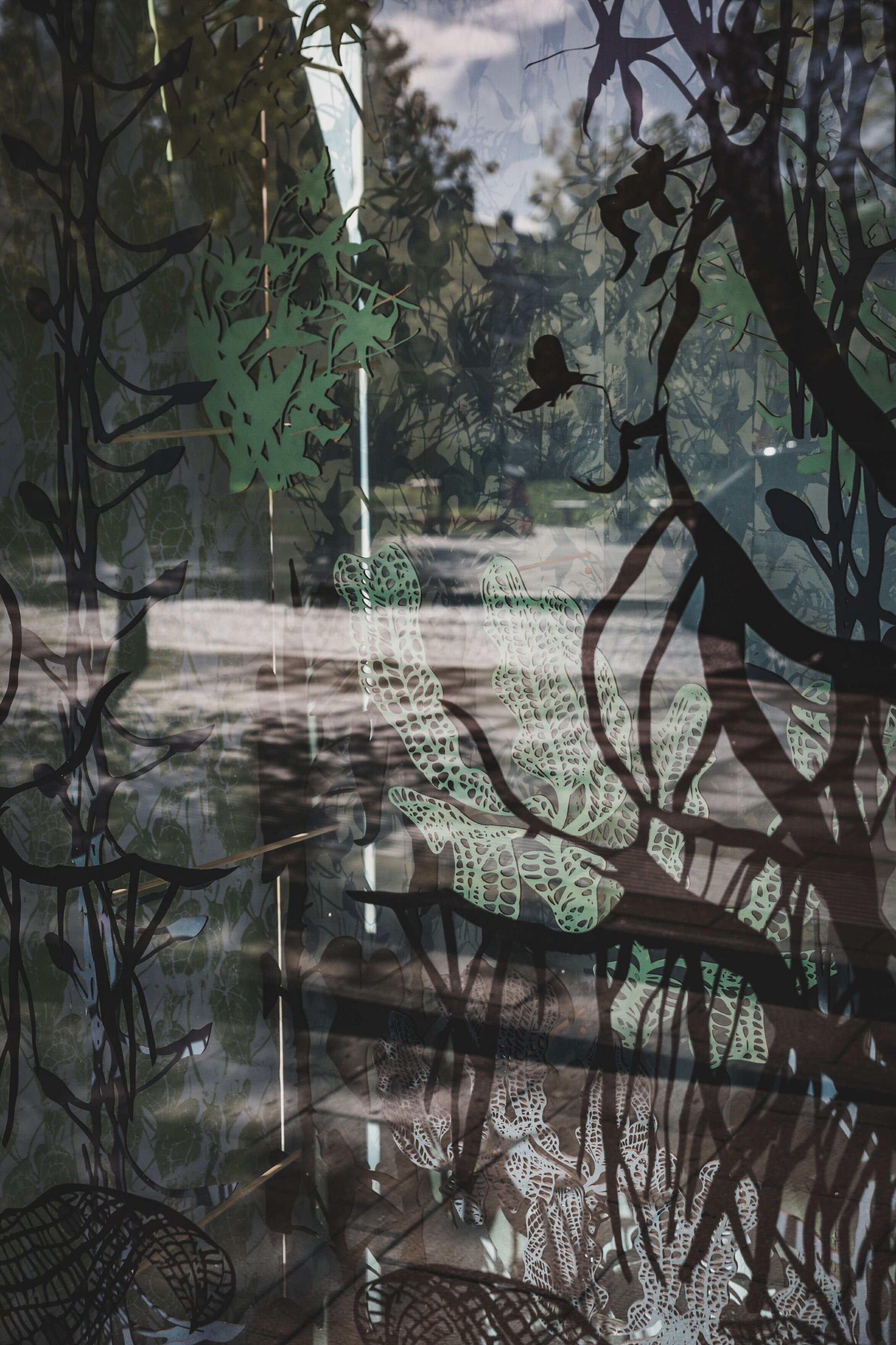Emma Molony: 'Horticultural Gold'
Emma is a Devon-based printmaker. Her work combines different printmaking processes and works with animation and 3D installations.
She designs and makes wallpaper, delivers printmaking workshops and explores experimental ways of printmaking without a press.
Emma’s inspiration for the commission has come from the Veitch Nurseries founded in 1808, the prolific Victorian biologist and botanical artist, Marianne North, and the introduction of plant species from around the globe to Exeter which still exist today.
‘Horticultural Gold’
“This decorative diorama responds to the rich and complex legacy of the Exeter Veitch Nursery, and reflects on our continuing relationship with tropical plants as objects of curiosity and ornamentation.
“The starting point for this project was Veitch’s Manual of the Coniferae (1881), one of the many botanical books now in the Devon and Exeter Institution.
“During the 19th century, Exeter’s Veitch Nursery was the largest group of family-run plant nurseries in Europe. Established at Killerton, it moved to larger premises at Mount Radford and occupied an additional site in London. Over 100 years, the Veitch family sent plant collectors around the world to hunt for rare and desirable plants, eventually introducing more than 1,600 plants to the West.
“As a printmaker and wallpaper designer, I am interested in how the era of Victorian plant-hunters impacted the wallpaper of the period. During the 1800s, designers like Zuber and Dufour tapped into the public appetite for exotic botanical scenes, creating gigantic scenic wallpapers with imagined landscapes which were designed to bring nature and ‘new’ worlds into the home.
“In response to this, I have created a layered theatrical three-dimensional wallpaper.
“Rather than imitate the true colours of the plants, I used the stylised colour palettes of 19th-century block-printed papers. I’ve printed and laser cut some of the orchids, ferns, vines, shrubs and trees brought back for the Veitch Nursery by the Cornish plant-hunter brothers, Thomas and William Lobb. These are plants commonly seen in homes and gardens throughout the UK today, but they were first brought to Europe from the mountains of Chile and Peru; the jungles and rainforests of Borneo and Madagascar.
“Although the story of the West’s quest for ‘horticultural gold’ explodes with themes of gender, class, profiteering and colonial frontiers, I am interested more specifically in the appropriation of these plants in a Victorian context, where they were quite literally removed, transported, renamed and repurposed with little reference to their origins.*
“While this artwork celebrates the significant impact the Veitch Nursery had on horticulture in Europe/in the UK, it also questions how the legacy of collection and colonialism shapes how we view plants to this day. Tropical plants have been seen as decorative objects, as subjects of scientific and pharmaceutical interest, as food sources and even as status symbols, but it is easy to overlook their complex indigenous plant-lore, mythology and ecosystems, and their ongoing importance to the cultures whose connection with them is thousands of years old.
“The theme of Trade & Exchange in contemporary Exeter was important to me in making of this piece. I couldn't have made it without the expertise of creative community organisations in Exeter - FabLab Devon, Double Elephant Print Workshop - and local horticulturalist and Veitch-historian Caradoc Doy.”




